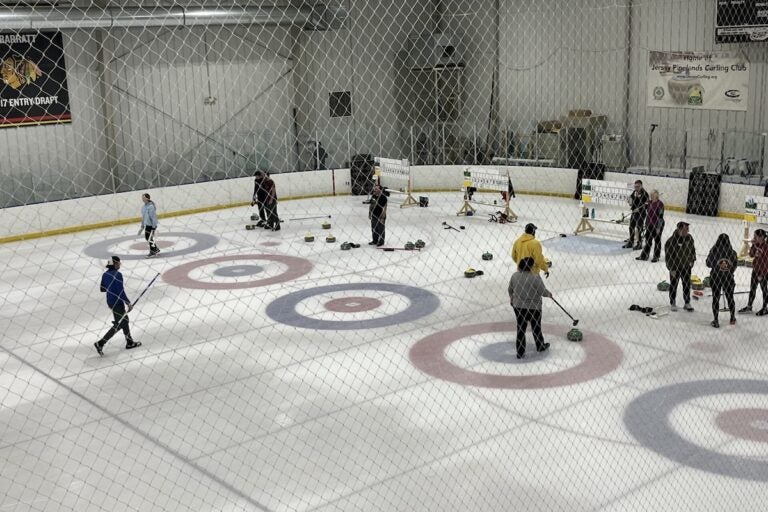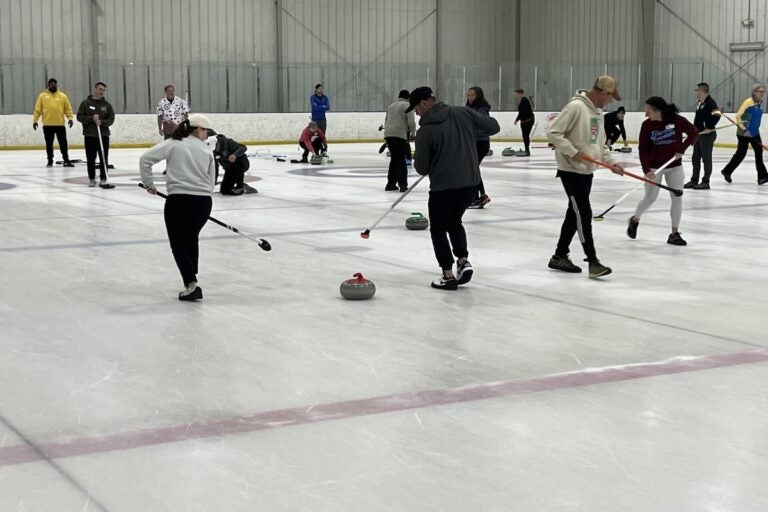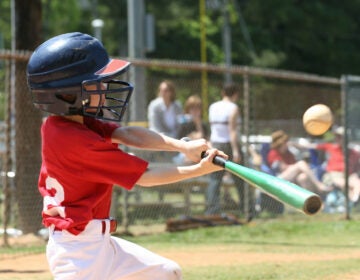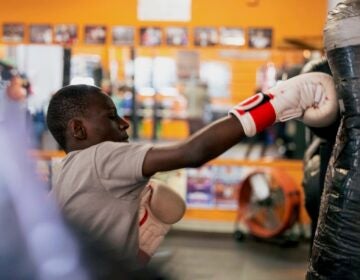The Olympic sport of curling is attracting new players in South Jersey
Members of the Jersey Pinelands Curling Club are traveling across the nation to participate in competitions.
From Camden and Cherry Hill to Trenton and the Jersey Shore, what about life in New Jersey do you want WHYY News to cover? Let us know.
In 16th-century Scotland, people came up with a game where they would slide large stones across frozen ponds. Curling became an Olympic sport in 1998, and it’s gaining popularity in New Jersey, even during the dog days of summer.
The Jersey Pinelands Curling club, a nonprofit, all-volunteer organization, has 70 members. “A lot of people just want to try it to say, ‘Oh, hey, I tried curling.’ They see it, it looks like fun, so they want to come out and do it,” said Deb Kingsland, the club’s vice president.
During a “Learn to Curl” event on a recent Sunday afternoon at the Pennsauken Skate Zone, 34 people paid $60 each to attend a two-hour session all about curling.
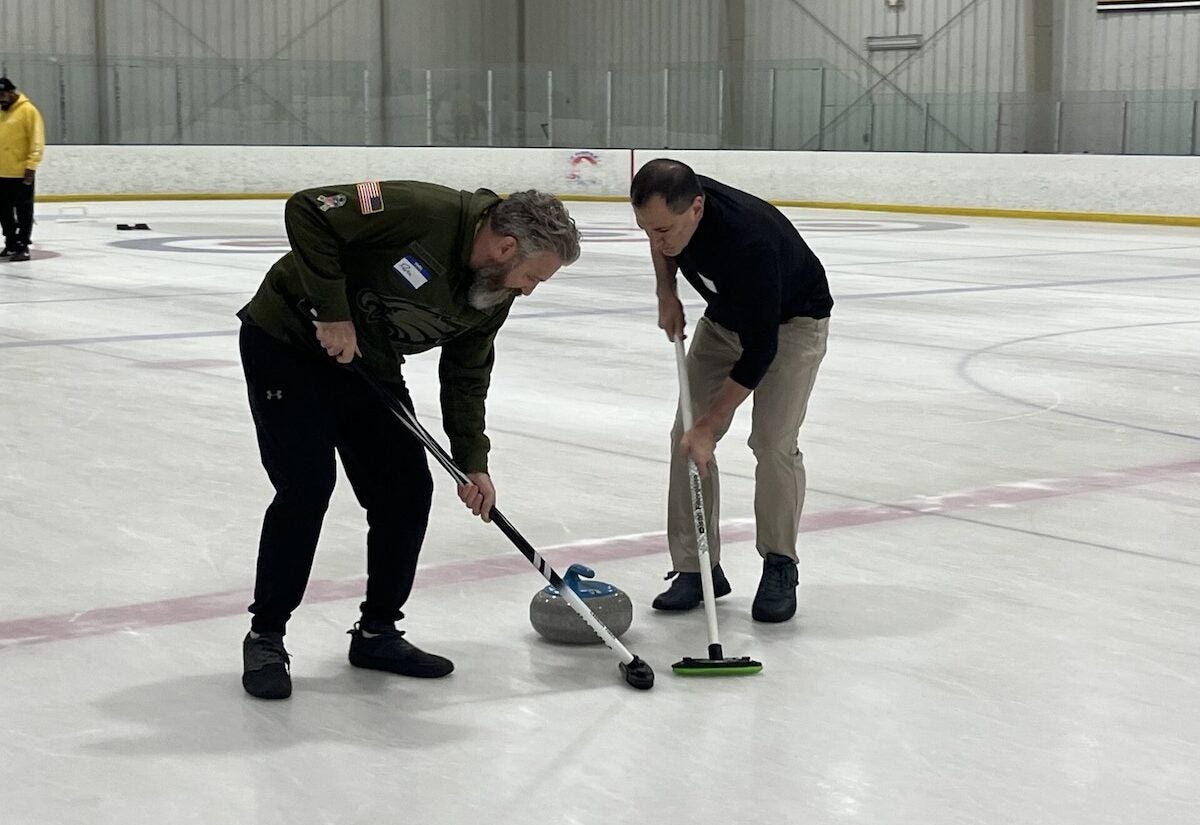
It’s a unique sport
South Jersey resident Steve Woronicak said he signed up to try curling because it looked cool.
“You always see it on the Olympics and I’m like dude, I’m not really like running anywhere, so it’s like less impact. It’s a good time,” he said. “I was, like, talking to my friends and it was like, ‘Yeah, let’s go curling.’ So I’m like, ‘Absolutely I’m in.”
Megan Brown traveled from Salem County to participate in the event. She was curious about the sport.
“It’s pretty easy to pick up, there’s a lot of nuance to it, but you can definitely enjoy it without knowing too much about it,” she said. “It’s definitely a bit strange, but it’s a blast.”
Kingsland said she became interested in curling after watching the Olympics 12 years ago.
“We went to a Learn to Curl at the Igloo [Ice Rink] in Mount Laurel, and that was it, I was hooked,” she said.
She has traveled across the country and beyond, attending curling tournaments.
“California, Florida, a couple of places in New York, Pennsylvania, Iceland, that was I think the farthest I’ve traveled,” she said.
Burlington County resident Gina Boggs, who started curling three years ago, said she went to the national “Five and Under” championship in Minneapolis earlier this year. The event is for players who have been curling for no more than five years.
“It was intimidating but great, there were a lot of great teams, but just to be there was exciting,” she said. “I’m not a competitive person or great at sports, but it’s a lot of fun and you meet a lot of quirky people.”
![olympic-sport-curling-DM-081525-05 Jacob Boggs [center] talks to curling player](https://whyy.org/wp-content/uploads/2025/08/olympic-sport-curling-DM-081525-05-1200x825.jpg)
Her husband Jacob Boggs, who is a curling instructor, said curling is like chess on ice, with plenty of variables and strategy.
“We always want to teach them don’t walk backwards on the ice, that’s how you slip and fall,” he said. “Don’t run obviously, it’s ice, it’s hard, it’s dangerous.”
“Not only are you playing against a sheet of ice, you’re playing against four other people on the other team. And sometimes you’re playing against your own teammates because sometimes they’re not making the shots,” he said.
Boggs said balance is the key to becoming successful at the game.
“If you can’t get your balance down, or start working toward getting your balance, then it’s going to be challenging to deliver a stone,” he said.
What’s curling all about?
The sport of curing has its own specific terminology.
The 42-pound granite stone that slides across the ice is referred to as a “rock” or a “stone.” The object is to get the rock to the “house,” a round bullseye target area that is down at the other end of the ice, and in curling language, players don’t slide the rock, they throw the rock. The center of the house is called the “button.” The closer the rocks are to the button, the higher the point total.
After the rock is thrown, two sweepers, one on either side of the rock, may use their brooms to sweep the area immediately in front of the rock, to either allow it to continue to slide toward the house or, depending on the sweeping motion, alter the direction of the rock so it will wind up in the house. The sweepers may also not sweep at all, if the rock appears to be well launched.
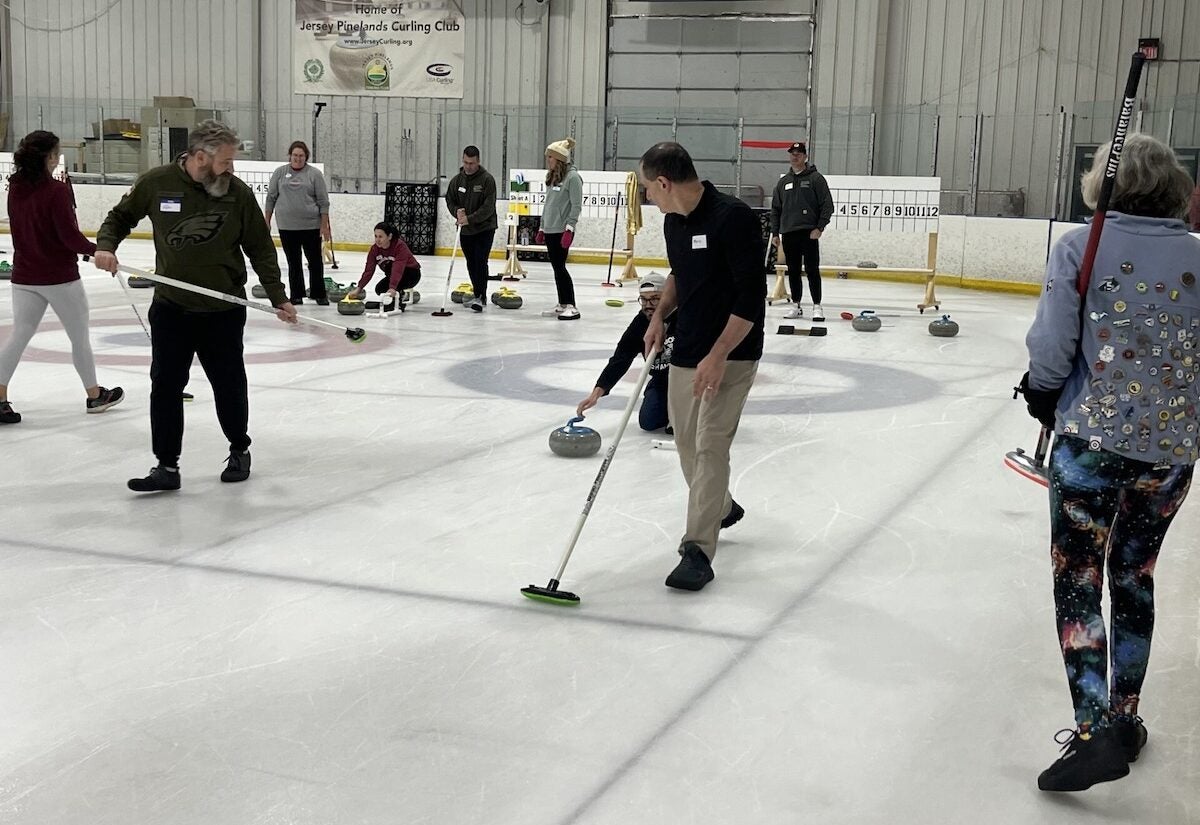
There are four players on a curling team, including the “skip,” who functions as the captain of the squad and will bark out orders to the sweepers. The sweepers yell information to the sweep, as they judge the speed and trajectory of the rock while it travels 72 feet to the house.
When the rocks are not in use, they’re kept in large chest freezers.
A source of camaraderie and pride
Curling players, novices and experts agree that it’s not just a sport. Their love for curling has helped build community and a social network.
Ryan Adamson was on the Jersey Pinelands Curling Club’s board of directors and served as the organization’s president from 2018 to 2022. He said he got hooked about 10 years ago, when he tried it with some friends and loved it.
“It’s an exciting sport, it’s fun, you use your brain, you use your body, it’s great to tell strangers that you’re a curler. I put it on my résumé and my LinkedIn account,” he said.
Kingsland said curling seems to attract nice people.
“You can go to any curling club anywhere and they’ll pour you a drink, sit down and have a conversation, it’s just great, anyone can play,” she said. “I’m not an expert, I play for fun, I think it’s the most fun you can have on ice.”

Get daily updates from WHYY News!
WHYY is your source for fact-based, in-depth journalism and information. As a nonprofit organization, we rely on financial support from readers like you. Please give today.





